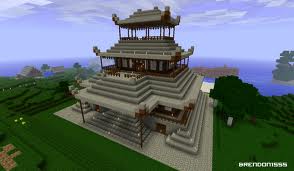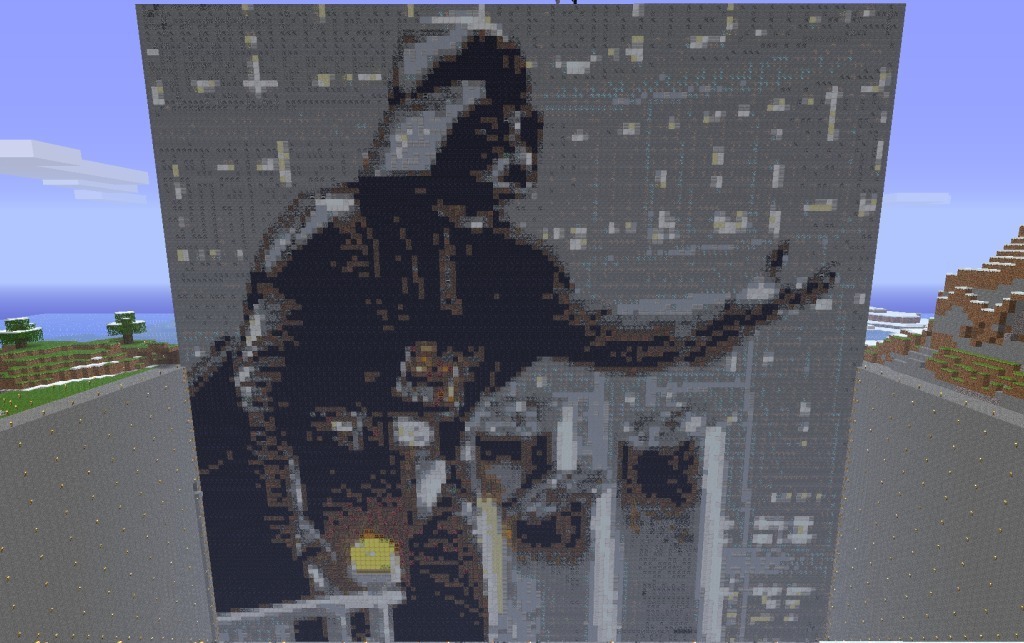Minecraft is a down loadable game from the Internet that costs around $40 for one license for a PC, there is a free iPad app (very basic, can’t save but good for learning on) or a $7.49 app for iPad (Phoebe assures me it is not as good as the online version but not bad).
What is Minecraft? Wikipedia explains Minecraft as an open world game that has no specific goals for the player to accomplish, allowing players a large amount of freedom in choosing how to play the game. The game world is essentially composed of rough 3D objects—mainly cubes—that are arranged in a fixed grid pattern and represent different materials, such as dirt, stone, various ores, water, and tree trunks. Players can gather these material blocks and place them elsewhere, thus allowing for various constructions. The game primarily consists of two game modes: survival and creative. Unlike in survival mode, in creative mode, players have access to unlimited blocks, regenerate health when damaged, and can fly freely around the world.
I’ve actually never played Minecraft but we do have an account that Phoebe and Lucy use. The more I watch the girls build and create worlds the more potential I see for use with students. Without any personal experience using the game my first thought is to use it to engage students to design and build historical locations, buildings, statues and artifacts. It would be a brilliant tool for this purpose. Click here to visit a teachers example of how he used it in an Ancient Greece unit (see photos of the student’s structures). Another use could be to design scale models. As everything in Minecraft is built with blocks students could convert measurements into blocks and replicate an object i.e. a building (Phoebe worked out to scale the height, width, lengths of arms and legs etc of one of her dolls in blocks to recreate it in minecraft).
If you where looking to engage students in learning I think this would be an ideal tool. Of course their are many blockers to using something like Minecraft to engage students and the list probably looks something like this:
- It costs money.
- I don’t know how to use it.
- It will be too much extra work to organise it.
- I don’t have time to learn something new at the moment.
- It looks great but it is not for me.
- and so on …..
But also consider:
- There will be a child in your class who can show others how to use Minecraft (give students leadership). Jump in and learn as you go, you don’t have to know everything before you start.
- It is a way to differentiate the curriculum and make it accessible to students who find watching a video or creating a poster dead boring.
- It allows for higher order thinking skills to be used including Analyse – investigate, examine, Evaluate – decide, justify, Create – construct, design, invent
With the potential to save multiple worlds on one iPad ($7.49 app) it may be an engaging tool for teachers to use in the near future at PBAS.
Below I have added some video and images of creations built using Minecraft.
The video below is of a students work. He had to design a structure from medieval times and decided to do it in Minecraft instead of building a traditional project.
Here are some images of things people have created using Minecraft. It is amazing what you can build out of blocks!






it would appear Nick there are great geometircal reasoning applications for Minecraft – and as you say, if 10 and 8 year olds can crack it, the applications would appear possible across a wide cross section. I could see that this could be a great opportunity for th likes of Tim and other early Middle School tech/design teachers based on the facet that there are ‘no rules’. What more could a young person ask for! As said, there would appear to also be mathematical applications to this Minecraft-thing. Worth investigating. Thanks for posting!
Further investigation would have it as a virtual lego-world! Lego’s been popular for how many decades now…..? Looks great when used in the right area – and as suggested, the open-endedness of the concept provides enormous scope for stduents to work at higher levels (Bloom’s).
This game has massive potential in the classroom, the video of the castle is unreal. Think of some disengaged students in years 7-10 and how this might engage them in learning about aspects of history, creating scale models, or recreating a physical scene from a novel. With over 37 million registered users online and massive Xbox sales there is no shortage of students to show teachers how to use the game. I’m not saying use the game for the sake of it but used in the right situation with appropriate planning it is a great resource.
I’m a teacher at Da Vinci Innovation Academy in Hawthorne, CA and I began using Minecraft in my project-based classroom this year. I started using it to teach Electrical Engineering, but soon it spread to other classes and classrooms. Check out my blog about what we’re doing!
http://www.Craft-Academy.com
Thanks for posting a comment on our school blog. Your Minecraft project looks awesome. I will add your blog to our list of teacher blogs on this site so that other staff at my school can see what great work you are doing and see the creative power of Minecraft.